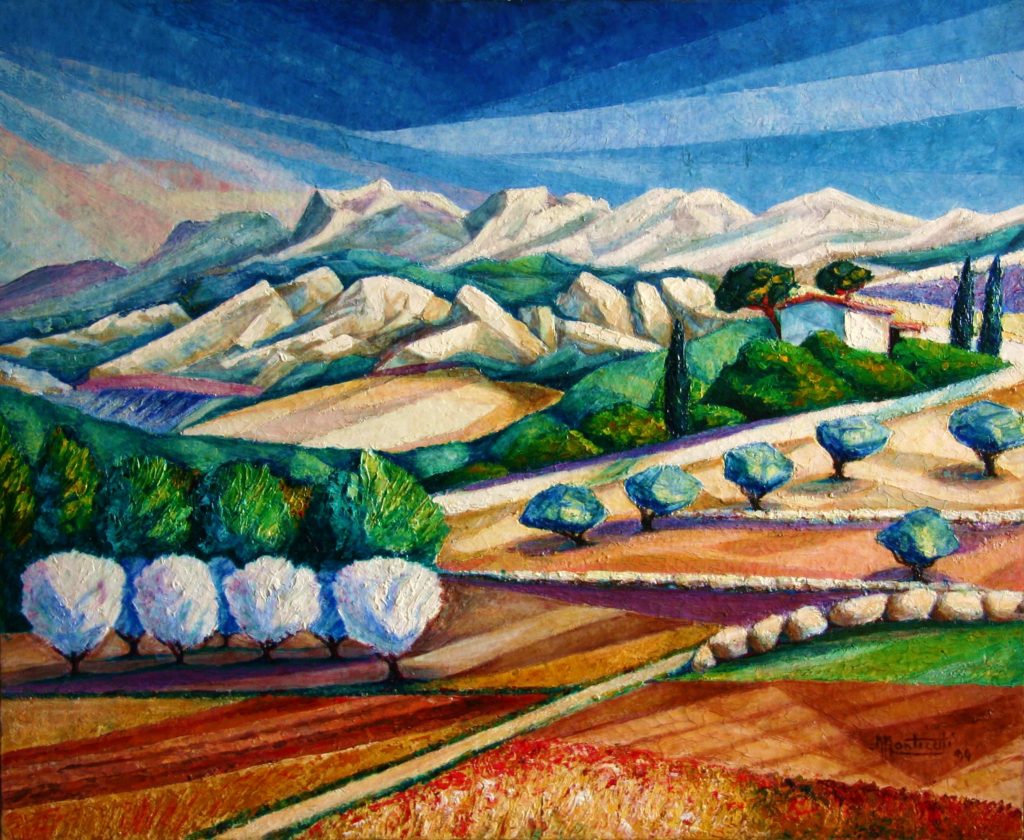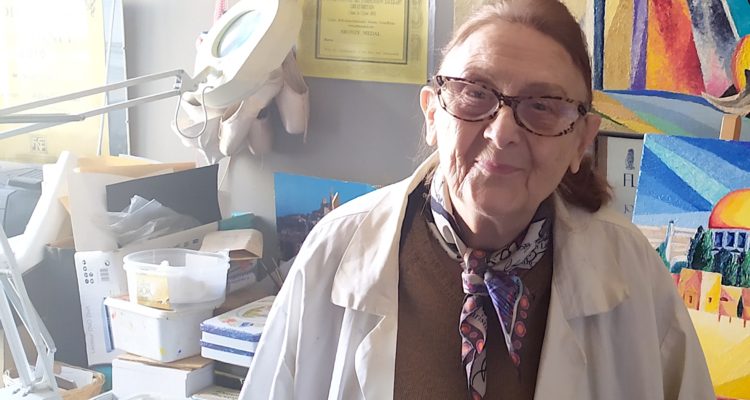“Life without our art doesn’t exist…”
Paul Zimmerman in conversation with Marguerite Monticelli
Paul Zimmerman: How did you develop interest in art?
Marguerite Monticelli: Born in Marseille in a family of art lovers, descendant of the painter Adolphe Monticelli through my father, art entered my life both from my father’s side by heredity and from my mother for love of art. Paper, pencils were my first toys, the colors, the images fed my imagination and my dreams. After the high school I entered the Marguerite Allard Academy at 13 quai de Rive Neuve in Marseille, I perfected my artistic training there, physically by the study of the various disciplines, drawing, modeling, painting, watercolor, pastel, oil. I studied various currents which extend over the centuries, from Antiquity to in the 26th century, surprising and enchanting.
Later the search for independence, a professional curiosity pushes me towards other disciplines: craftsmanship, with an art earthenware workshop, large fires, decoration with the ornamentation of windows, design with, ‘layout of apartments, fashion, study of styling and modeling (journalist-stylist in Auvergne), advertising (posters, logos, acronyms for clothing), again “painting” with the restoration of easel paintings, ancient and modern. The daily work on these paintings reopens a desire to create my own images, to translate my own emotions. From 1984 it is again full-time painting.
PZ: What is the most challenging aspect of your work?
MM: Provence.., my eyes opened on a sun-drenched landscape, where light diffuses from all sides. Around me, a lively, warm, lively, noisy, picturesque life entered me. Towards images where vivid, shimmering colors absorbed by my eyes. My passion for painting joins my passion for living. I have no specific theme, landscapes, marines, nudes, flowers, circus, bullfights. Everything interests me: children, human nature, the vagaries of life, each painting writes its story, its novel, each painting is a moment of life, happy or sad, festive or laborious.
PZ: What is your artistic process? How do you create your painting?
MM: In general, I think, I think again, but without a precise goal; I leave my sketches, I will walk, my thoughts spinning in my head. After two or three days, it becomes clearer, a first draft emerges that I will improve until a satisfactory result. I calculate the format, orientation, I’m looking for a title and it all begins. The story starts. On craft paper, in the chosen format, I will work this drawing with precision with charcoal pencils. Figurative works are influenced by cubism, the layout is geometric, the finish will be contemporary figurative. My oil paintings are of a certain thickness that I work with knives to create texture. Additionally, depending on the subject various finishes may be applied to my creation.

PZ: Do you have any particular goal in mind when you start a new piece ?
MM: If the exhibition has a specific theme, yes, we must think about it seriously, if the painting must be installed in a specific place, it must be in harmony with its immediate environment so as not to be prejudicial if you are. even we impose a particular theme or if the table is intended for a defined person, we must consider various studies in relation to the chosen theme or with the person concerned and stick to the guidelines provided.
PZ: How do you know when the painting is finish?
MM: With oil paintings a waiting time is necessary for drying. This allows a calm reflection for additions or corrections. It is probably the most difficult moment, the more delicate in the conception of a work. If we stop too soon, it will appear unfinished, even botched according to time. If we give in to the temptation of perfection, it will be rigid, polished, worked and will lose its moment of life. The spontaneity is important and perhaps this flash of genius sometimes gives the work its life.
PZ: Has your practice changed over time?
MM: It seems inevitable. We even change with the years, the fashions, the intellectual currents, artistic literary. I very quickly evolved towards a more geometric vision in the conception of my work.Under the influence of cubism my line affirmed itself more of strength and presence, in your layouts the use of the triangular figure, diagonals have added a dynamism, geometric abstraction to the bright colors of my origins.
PZ: Which artists are you most influenced by?
MM: In my particular situation it is the painter Adolphe Monticelli who had a very great influence on me, from my childhood. Leonardo da Vinci, whose “Treatise on Painting” I devoured, Titian after a trip to Venice, Delacroix for his flamboyant colors, Cézanne for his balance of power between his contrasting colors, Dali for the quality of his drawing, David Hockney for its contemporary realism.
PZ: How would you define art?
MM: For me, Art is Life; life without art does not exist. Art has been a shelter, a refuge, a friend, a consolation, a joy! Without art how to endure the vagaries of life, disappointments, sorrows but also victories, enlightenment without being dazzled by artificial glares? Art allows us to stay alive, to reconcile ourselves with our being. To live, physically, we need to breathe. Basically, in order to live spiritually, sensibly we need art. Art is air to breath, to exist!
PZ: What are you working on now?
MM: In anticipation I have a collective exhibition in February, in Paris, one in June in Paris, as an artist partner of the magazine “Art and Design”, organizer of the exhibition, a show in St Petersburg, awarded several times in 2020, because of the pandemic; a publication on the magazine “Art and Design” on the Nude and a publication as an artist on the decoration magazine LOFT.
PZ: How does the pandemic influence your work and sensibility?
MM: Being still in the pandemic with no forecast for its outcome, I rather had the impression “of lacking freedom”, of being trapped, disappointed by the selfish, irresponsible attitude of some, forgetting that doing part of a whole we were all dependent on each other.
